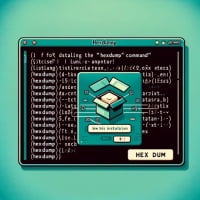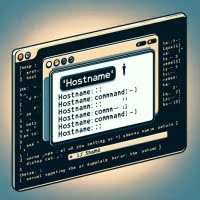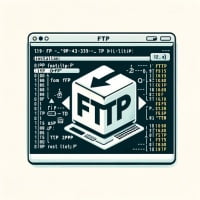Bash
02 Jan 2024
Mastering Linux: How to Install and Use Gzip Command

Are you looking to install gzip on your Linux system but aren’t sure where to start? Many Linux users, particularly beginners, might find the task intimidating. Yet, installing gzip will make it easy to manage file sizes on your Linux system. Gzip is readily available on most package management systems, making it a straightforward process
02 Jan 2024
Linux Hexdump Command: Installation and Usage Guide

Are you looking to install the hexdump command on your Linux system but aren’t sure where to start? Many Linux users, particularly beginners, might find the task intimidating. Yet, installing hexdump will make it easy to analyze binary files via the Linux command line. Hexdump is also readily available on most package management systems, making
02 Jan 2024
Linux ‘Host’ Command Install and Usage Walkthrough

Are you looking to resolve domain names into IP addresses in Linux? Just like a skilled detective, the ‘host’ command in Linux can help you find the information you need. However, installing Linux commands might seem daunting, especially for beginners. But don’t worry, the ‘host’ command is available on most package management systems, which makes
02 Jan 2024
Linux ‘hostname’ Command: Installation and Usage Guide

Are you grappling with managing your system’s hostname in Linux? For many Linux users, especially the beginners, this might seem a daunting task. However, the ‘hostname’ command, which serves as your system’s name tag, is an essential tool worth learning to install and use. It’s readily available on most package management systems, making the installation
02 Jan 2024
Linux GDB Command Installation: A Step-by-Step Guide

Are you struggling with debugging your Linux programs? Like a detective, the ‘GDB’ command in Linux can help you find and fix bugs with ease. However, installing and using GDB might seem a bit daunting, especially if you’re new to Linux. Luckily, it’s available on most package management systems, making the installation process straightforward once
02 Jan 2024
Linux System Monitoring: How-to Install ‘Glances’ in Linux

Are you looking to install the glances command on your Linux system but aren’t sure where to start? Many Linux users, particularly beginners, might find the task intimidating. Yet, glances is a powerful tool for monitoring system performance; it’s a utility worth mastering. Glances is also readily available on most package management systems, making it
02 Jan 2024
Installing and Using the GCC Command: Linux User Guide

Are you planning to compile your C programs in Linux? You might find the task daunting, especially if you’re a beginner. However, the ‘GCC’ command, akin to a skilled translator, converts your C code into an executable program. It’s a tool that’s worth learning to install and use. GCC is readily available on most package
02 Jan 2024
Mastering Linux: Installing and Using FTP Command

Are you trying to transfer files between your Linux system and a remote server? If so, the FTP command in Linux can be your reliable courier for this task. However, if you’re new to Linux or haven’t used the FTP command before, the process might seem a bit daunting. Luckily, it can be installed using
02 Jan 2024
Linux ‘find’ Command: Installation and Usage Guide

Are you struggling to locate files on your Linux system? If so, you’re not alone. Many Linux users, especially beginners, find it challenging to navigate their file system efficiently. However, the ‘find’ command is a powerful tool that can help you search for files based on different criteria. It’s a utility that’s worth adding to
02 Jan 2024
Install and Use Linux ‘free’ for Memory Management

Are you struggling to understand your Linux system’s memory usage? Just like a fuel gauge in a car, the ‘free’ command in Linux can help you monitor your system’s memory usage. Installing and using the ‘free’ command can seem daunting, especially if you’re new to Linux. However, once you understand the process, it becomes a